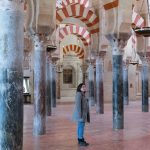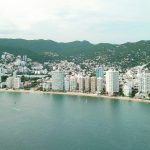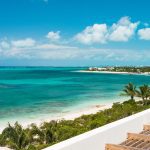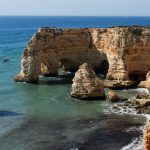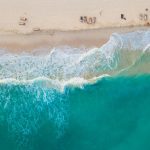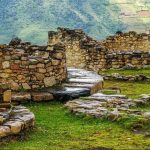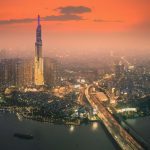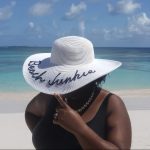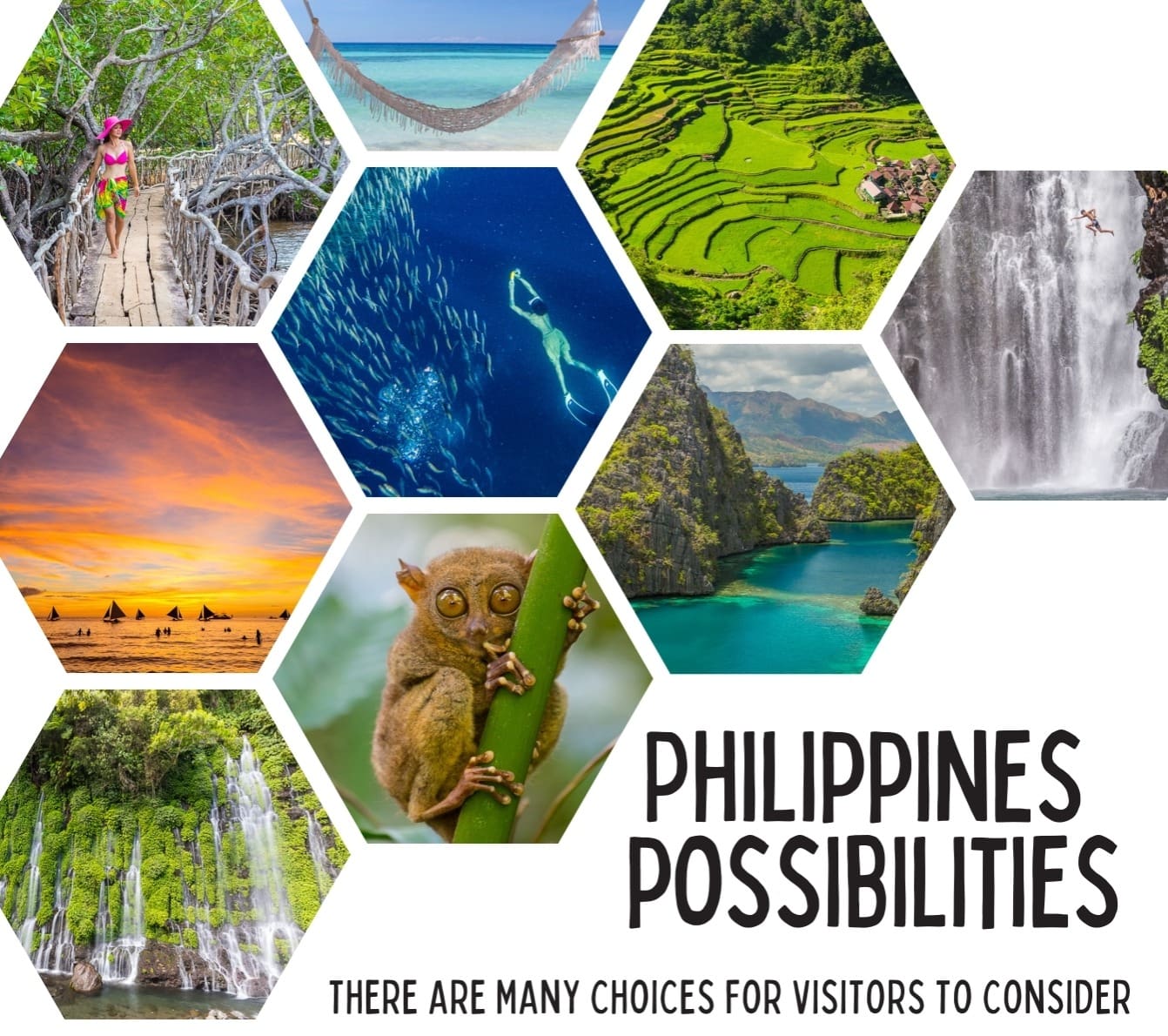
STORY/Ted Davis
PHOTOS/Stuart Dee
With over 7,000 islands spanning a distance of 1,850 km north to south in a tropical climate, there is no shortage of choice for exotic holiday destinations in the Philippines. The only dilemma posed is deciding which islands will be the chosen few – or one – for a vacation in the Republic of the Philippines.
Now that Air Canada is offering a second choice for non-stop flights between Vancouver and Manila (in addition to Philippine Airlines), more Canadians will be considering a trip to the Pacific destination. On April 1, the airline started non-stop services between Vancouver and Manila, and is now offering four flights per week, departing Vancouver on Tuesdays, Thursdays, Fridays and Sundays.
The only other non-stop flights to the Philippines from Canada are by Philippine Airlines. It operates daily non-stop flights from Vancouver to Manila, and three non-stop flights per week from Toronto – on Mondays, Thursdays and Saturdays.
But for such a large country, the Philippines remain one of the world’s lesser known tropical holiday magnets for Canadian leisure travellers. Hence a few following guidelines, based on vacation priorities, ranging from culture seeking to explorations of nature to luxury retreats.
NATURE
Tarsiers in Bohol
One of wildlife’s most fascinating creatures can be found on just a few islands in the Philippines, including primarily Bohol, but also Leyte and Samar. The tarsier is reputedly the world’s tiniest primate, weighing between just 80 and 160 grams, and standing just a few inches tall. But its giant, oversize eyes are its most surprising visual aspect.
To observe tarsiers, the best option is to visit the Philippine Tarsier Sanctuary in Corella on Bohol. The sanctuary is run by the Philippine Tarsier Foundation, and offers a safe and ethical way to watch the creatures in a natural habitat. There is a fee to enter. Many tours combine a tarsier visit with other Bohol attractions like the Loboc River cruise and the Chocolate Hills. Tarsiers are threatened by extinction due to habitat destruction and wildlife poaching.
Sardines in Cebu
In Cebu, a spectacular phenomenon is the “sardine run,” where large schools of sardines congregate near the town of Moalboal and create impressive visual displays. Thousands of sardines gather almost daily, drawing divers and snorkelers from around the world. Factors like an upwelling of nutrients and changes in sea temperature are believed to play a role in this occurrence.
The fish form massive schools that pulsate like a cloud in perfect synchronization, and they morph from a tightly knit ball into spirals, tunnels and vortexes. They do so with seemingly telepathic coordination, and photographer Stuart Dee calls it “a miracle of nature.”
Mt. Mayon Volcano
The raw powers of nature are laid bare in Legazpi, on the southern reaches of Luzon, where the perfectly conical Mt. Mayon volcano rises prominently on the horizon. Mt. Mayon is far from dormant, with volcanic activity ranging from smoky emissions and occasional fiery flashes to destructive, full-scale eruptions.
Visitors to Legazpi can explore the lava-layered flanks of the mountain on guided ATV trail rides or hikes. Or, a popular excursion is to see the spire of the Cagsawa Church, which lies almost entirely covered by lava, with only its spire remaining at ground level to demonstrate how deep the lava flow was during an eruption of Mt. Mayon in 1814.
Whale Sharks
Legazpi is relatively near Donsol, at the southernmost end of Luzon. The bay at Donsol is especially appealing to the whale sharks that take up residence there to feed on the plankton and krill from a fresh water river. As such, Donsol is a top spot for seeing and experiencing whale sharks in close proximity.
It is home to the Whale Shark Interaction Eco-Tourism Project, which is a leader of sustainable tourism in the Philippines. They oversee a daily program during which visitors board outrigger powerboats and motor slowly around the bay in search of the giant creatures. If they get the chance, the visitors enter the water for an encounter, but are told not to touch or impede the whale shark in any way and to stay about three metres from the giant tail. An encounter package is about US$75 for a half day.
LUXURY
Boracay
Boracay, a famous vacation island and one of the top destinations in the Philippines, recently engineered a government funded clean-up project. The island was actually closed for six months in 2018 while the island’s sanitation infrastructure was completely overhauled. Also, news rules were introduced to limit the number of visitors to Boracay and to ban alcohol consumption and smoking in designated zones.
But the key thing that did not change were Boracay’s silky beaches. White Beach is the best known of those, and it is populated with small resort hotels that connect directly to the sand. Boracay is just 10 sq. km. in size, and offers other equally attractive and less crowded beaches. But nothing can quite top the sunset seen from White Beach.
Palawan
Palawan is a large island in the more southerly seas of the Philippines archipelago, and it offers a variety of exotic vacation options, together with smaller, nearby destination islands. For instance, El Nido, located in northern Palawan, is known for its spectacular limestone cliffs, pure white sandy beaches and clear waters. The limestone topography is similar to the karst pillars found in Thailand and Vietnam.
Further south on Palawan is the Puerto Princesa Subterranean River National Park, which also has a limestone karst landscape and features some of the largest cave rooms in the world. It is a UNESCO World Heritage Site.
Meanwhile, Coron is located about 215 km. north of Palawan and it has become known as a top diving and snorkeling destination. Numerous wrecks dating from WWII battles can be seen and visited in the warm, clear waters of Coron. The water is usually calm and the underwater visibility extends up to 24 metres. Non-divers can relax on one of Coron’s pristine beaches.
Siargao
Siargao has become known as the surfing capital of the Philippines, and every October the island hosts the Siargao International Surfing Cup, an event on the World Surf League calendar. The coastline features a succession of sandy white beaches and some of these have Pacific-facing reefs, on the edge of the deep waters of the Philippine Trench. This ensures the large ocean swells that create top surfing conditions, especially during the monsoon period from August to December.
Siquijor
Siquijor is a relatively remote island in the Philippines, but it has inspired a growing number of tourists to experience not only its natural beauty and pure white beaches, but also its ancestral medicinal techniques practiced by traditional healers. The island is located in the Central Visayas region of the Philippines and is accessible by either boat or flight.
CULTURE
The culture of the Philippines is unique in Asia, given the historic influence of Spanish colonization on the country. This has determined that the Republic of the Philippines is Asia’s most Christian nation.
This was sparked by the arrival of world explorer Ferdinand Magellan in 1521, who claimed the island of Cebu for Spain with a cross that can still be seen, followed by the construction of Spain’s first fort and settlement in the Philippines on Cebu. It wasn’t until 1571 that Intramuros (present-day Manila) was founded on the island of Luzon. Intramuros was the center of government during the Spanish colonial period, and it is the historic foundation of Manila.
Intramuros
Intramuros is known for its restored Spanish colonial architecture and fortifications. Two iconic landmarks in Intramuros – the Centro de Turismo Intramuros and the Museo de Intramuros – were reopened late in 2024, signalling a new era for the walled city of Manila.
The exhibits at the Centro breathe new life into the stories of Intramuros, blending history with modern technology. Built on the former site of the San Ignacio Church, admission to the Centro is free.
Next door, the Museo de Intramuros presents refreshed galleries and a comprehensive collection of art and artifacts. Its redesign invites visitors to explore the cultural and spiritual roots of the Philippines. There is a fee for entering the restored Museo.
Cebu City
The origins of Spain’s cultural influences and colonial dominance are rooted in Cebu City, on the island of Cebu in the central Visayas region of the nation. Magellan’s globe-spanning voyages and discoveries made him famous, but his act of offering Christian conversion to the natives of Cebu signalled the beginning of Spanish colonization, resetting the cultural course of the Philippines.
To commemorate this event, Magellan planted a large wooden cross on Cebu’s shores in April 1521, and it has since been known as Magellan’s Cross. It is located in front of the Cebu City Hall, near the Basilica Minore Del Sto. Nino, and can be seen by visitors. A fortress built in 1565 on Cebu (Fort San Pedro) confirmed Spanish control of the new colony, and it is open for touring.
Banaue
Cultural landmarks that predate the Spanish arrival by hundreds of years can be found and experienced by travellers elsewhere in the Philippines. One of the most striking is the Banaue Rice Terraces, located in the northern province of Ifugao, on the main island of Luzon.
These remarkable rice farms have been carved into the high, steep hillsides of the Banaue region and continue to operate centuries after they were constructed. Snaking through the midst of these working farms are trails that tourists can use for hikes through the scenery.
The rice terraces are perched 1,500 metres up on the sides of the Cordillera mountains, some 250 km. north of Manila. This network of rice fields is at least 2,000 years old.
But the time to visit the Banaue Rice Terraces may be getting short, as the increasing frequency and ferocity of typhoons, caused by climate change, is eroding the ancient structures. Already, about one-third have been abandoned. Tours range from one day to four days with accommodations offered.

